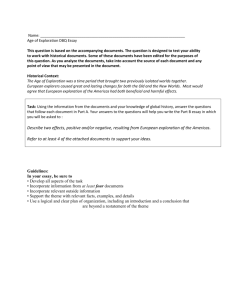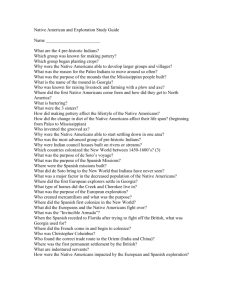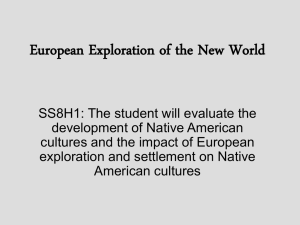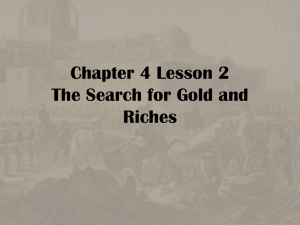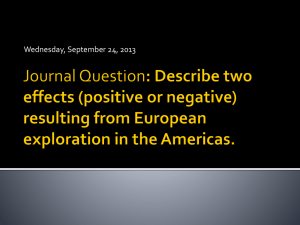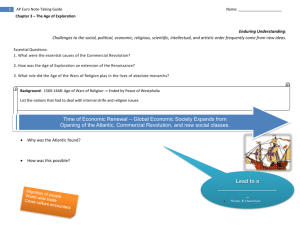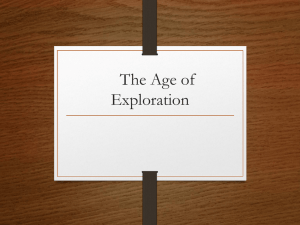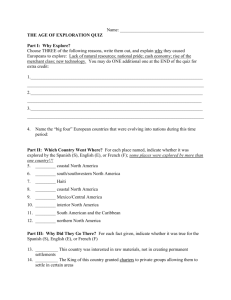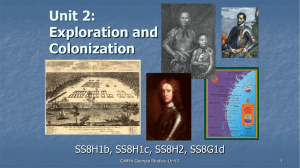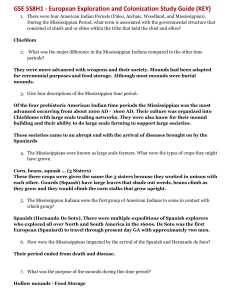Early Georgia History Study Guide
advertisement
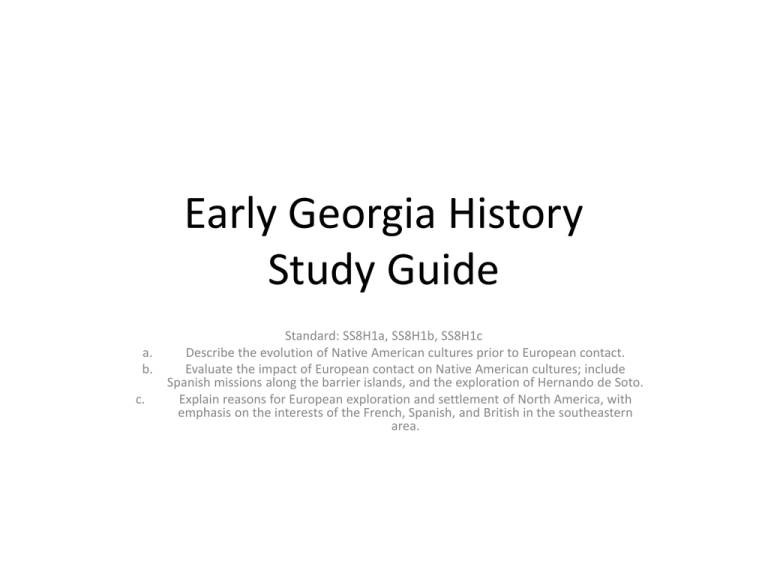
Early Georgia History Study Guide a. b. c. Standard: SS8H1a, SS8H1b, SS8H1c Describe the evolution of Native American cultures prior to European contact. Evaluate the impact of European contact on Native American cultures; include Spanish missions along the barrier islands, and the exploration of Hernando de Soto. Explain reasons for European exploration and settlement of North America, with emphasis on the interests of the French, Spanish, and British in the southeastern area. Prehistoric People: PaleoIndians *Many scientists believed that the first people came to North America about 40,000 years ago! *Archaeologists call these people Paleo Indians. *Paleo-Indians are ancestors of North and South America’s native people. *Paleo-Indians came to the Americas from Asia in search of food. Archaic Period 8,000 to 1,000BCE *Many cultural and technological advances took place during this time. *Anthropologists (scientists who study human life and cultures) divide this main period into three sub-periods. *Early Archaic Period – people traveled in small groups called clans who worked together to gather nuts, fruits, seeds, and roots. The moved frequently to find new sources of food *Middle Archaic Period – Hunting and gathering continued, but clans moved less and less. Development of weapons such as the Atlatl. *Late Archaic Period – begin to build permanent structures. Many groups settled near rivers, cooking technology increased (using pottery and soapstone bowls) Woodland Period 1000900CE *Natives living in the Eastern Woodlands region of American Southeast to New England. *Survived by fishing, gathering plants, and hunting *Developed technologies such as tools and pottery *Began living in groups called tribes. *Small villages began to start up, but most were not permanent. *People began the practice of agriculture. The most common was called the Three Sisters of Native American agriculture: corn, beans, and squash Mississippian Period 900CE-late 15th century *Natives were farmers. *Lasted until European contact. *Lived in villages called chiefdoms. *Traded shells, copper, and ceramic objects with other groups. *This group began to build large mounds of earth, and were called “moundbuilders”. European Exploration – late 15th Century *Many Europeans sent missionaries to the Americas to spread Christianity. *Most early exploration in the American Southeast was done by the Spanish. *They explored the coastline of the Southeast along Georgia’s barrier islands. *The Spanish built missions on the islands to convert Native Americans to Catholicism . European Explorer: Hernando de Soto *Hernando de Soto from Spain was the first European to see the interior of Georgia. *He was looking for gold. He looked for three years before he died, without finding any gold. *De Soto and his group were the only Europeans to see many Native American cultures before they declined. *Today, historians benefit from de Soto’s writings of his interactions with the Native Americans. Causes of European Exploration *God, Gold, Glory *France – 1562, France explores North America in search of Gold *Spain- 1568, Spain explores North America in search of wealth, built missions to spread Catholicism. *England – 1588 Britain defeated the Spanish Armada and began to explore the Americas. They were looking for gold, and to set up trading companies for items like copper and furs. Took Natives as slaves. *Native and European interaction often led to warfare due to disagreements over ownership of land in North America * Native populations decreased as a result of European exploration
